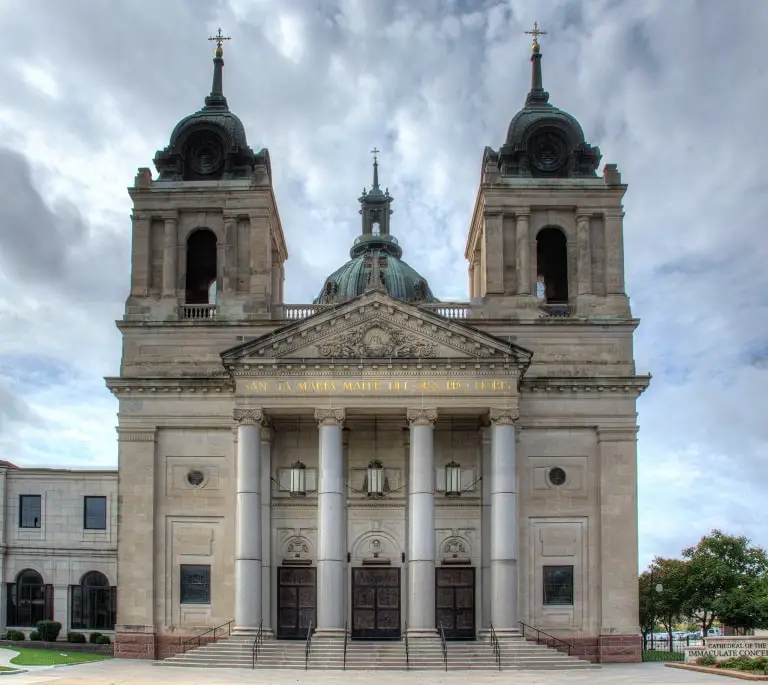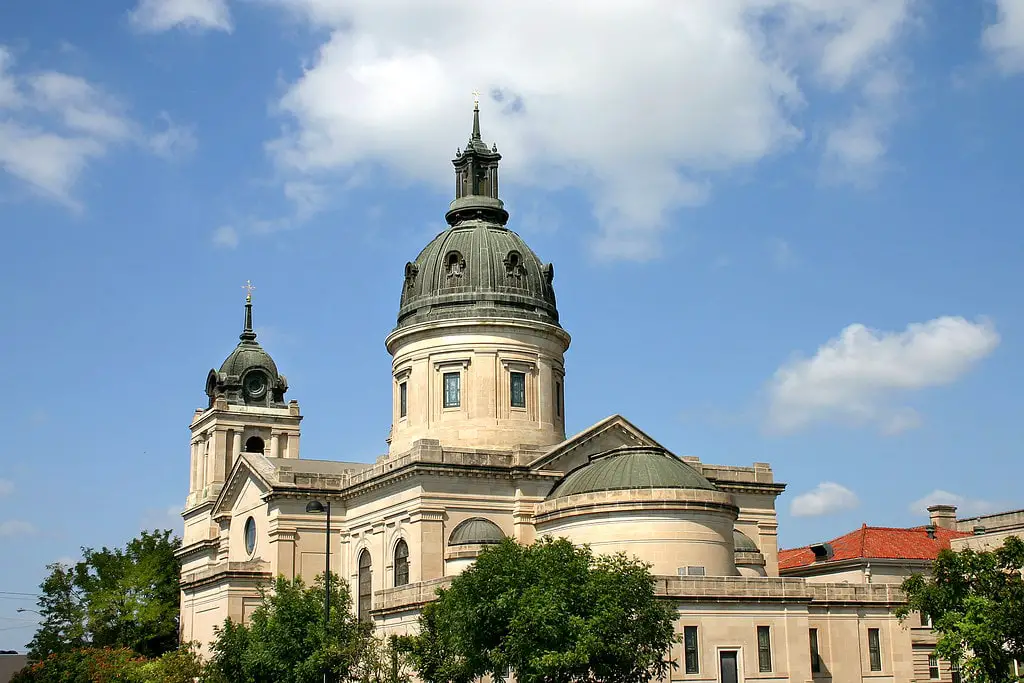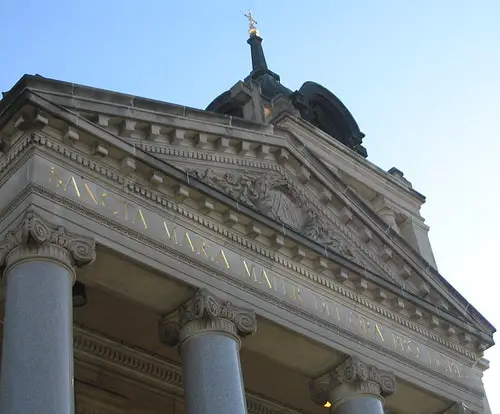Echoes of Faith: The History of the Cathedral
Under the vast Kansas sky, in the heart of Wichita, stands the Cathedral of the Immaculate Conception, also known as St. Mary's Cathedral.
This sacred edifice serves as the spiritual hub for the Catholic community in the region and as a beacon of the city's historical landscape.
It all began in 1872 when the seeds of Catholicism in Wichita were planted with the construction of the first Catholic church.
This humble beginning would later bloom into the cathedral parish, founded in 1887.
The ceremonial placing of the current cathedral's cornerstone in 1906 signified a pivotal moment in the city's spiritual chronicles.
The cathedral, consecrated on September 19, 1912, is a testament to the commitment and dedication of the Catholic community in Wichita.
Designed by Emmanuel Louis Masqueray, a prominent architect of the time, the church was built at a staggering cost of $500,000.
The ceremonial dedication was grand, with Cardinal James Gibbons of Baltimore gracing the occasion with 30 other Catholic bishops.
Architectural Splendor: A Closer Look
The Cathedral of the Immaculate Conception is not just a place of worship but a piece of architectural brilliance.
Measuring 169 feet long and 100 feet wide at the transepts, the cathedral stands tall against the Wichita skyline.
The dome, an impressive 135 feet from the ground, crowns the building, adding to its majestic appearance.
Constructed of Bedford stone, a popular choice for monumental buildings, the cathedral exudes an aura of permanence and stability.
The cathedral's bronze doors, installed in 1997, deserve a special mention.
These were not ordinary doors; designed and created by Domus Dei of Italy, they stand as a testament to the artistry and craftsmanship.

A Hero's Rest: The Interment of Father Emil J. Kapaun
The Cathedral of the Immaculate Conception also holds an important place in the heart of the community for another reason: it is the final resting place of Father Emil J. Kapaun, a beloved priest and hero.
Father Kapaun, a native of Kansas, served as a chaplain during the Korean War, demonstrating courage and compassion in the face of grave adversity.
Father Kapaun's remains were interred at the cathedral in 2021, 70 years after he died in a Korean prisoner-of-war camp.
His remains were discovered only in March of that year, marking a poignant moment for his family and the community that admired him.
Following a funeral Mass at Hartman Arena, Father Kapaun's remains were carried in a horse-drawn caisson procession from Veterans Memorial Park to the cathedral, where he was interred in a 5,400-pound tomb.

A Day to Remember: The Significance of Father Kapaun's Interment
Father Kapaun's interment was not just a funeral but an event that marked the end of a long journey.
The Catholic Diocese of Wichita had been planning the service for months, ensuring this beloved priest received a fitting tribute.
Governor Laura Kelly underscored the occasion's significance, declaring September 29, 2021, Father Emil Kapaun Day.
Father Kapaun, born on April 20, 1916, in Pilsen, Kansas, was ordained a Catholic Priest in Wichita on June 9, 1940.
He joined the U.S. Army Chaplain Corps in 1944, serving in World War II and the Korean War, where he provided solace and comfort to soldiers.
He was captured in November 1950 and passed away in May 1951 in a North Korean POW camp after months of declining health.
His daring deeds of kindness and courage won him the honor of 'Servant of God,' bestowed by Pope John Paul II in 1993, and his candidacy for canonization is presently being evaluated by the Catholic Church.

A Community's Heart: The Cathedral's Role in Wichita
The Cathedral of the Immaculate Conception is more than a stone and glass structure.
It is an essential part of the fabric of Wichita, serving as a touchstone for the community's faith and history.
It has witnessed the ebb and flow of generations, each leaving its mark on the cathedral and the city.
As the seat of the Diocese of Wichita, the cathedral is a hub of spiritual activity, hosting regular Masses, weddings, baptisms, and other sacred ceremonies.
But beyond its religious functions, the cathedral also plays a crucial role in fostering community among its parishioners. Its doors are always open to anyone seeking solace, comfort, or a sense of belonging.
A Legacy in Stone: Looking to the Future
The Cathedral of the Immaculate Conception, with its majestic architecture and deep-rooted history, continues to inspire the people of Wichita.
The memory of Father Kapaun and the countless other priests who have served at the cathedral is etched into its stone walls, reminding the community of their enduring legacy.
As we look to the future, the cathedral stands as a beacon of faith, guiding the community toward an end filled with hope and unity.

It reminds us that despite adversity, the human spirit remains resilient, bound by the shared values of compassion, service, and community.
Through its imposing doors and under its towering dome, the cathedral will continue to welcome the faithful, standing as a testament to the enduring strength of the Wichita community.
